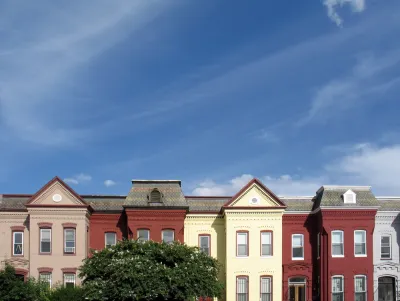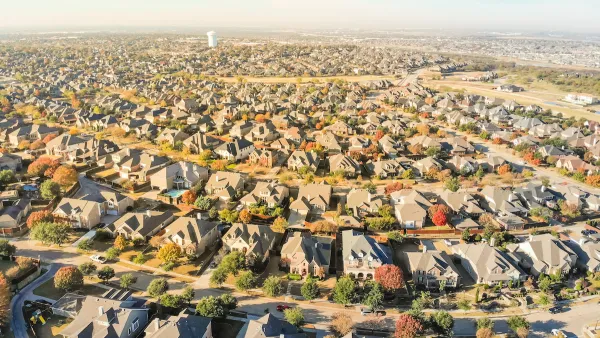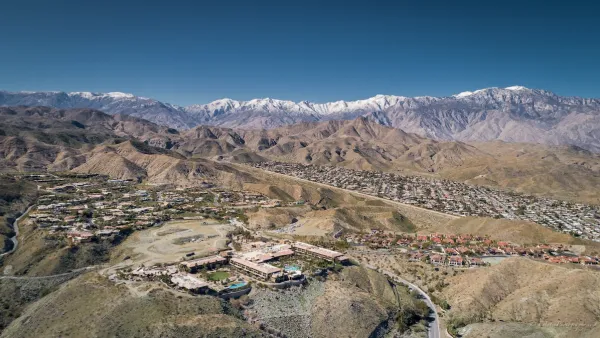Over the last three decades, the D.C. region has seen the most development in far-flung exurbs disconnected from area jobs and transit networks.

A report from the Brookings Institution claims that new housing in the Washington, D.C. region is too dispersed, failing to take advantage of the area's "highly centralized" public transportation and job centers. "Large employment centers and transit infrastructure are durable features of the built environment that persist for many decades. Therefore, a climate-friendly growth strategy for the region would concentrate new housing, retail, and services around these existing locations." But as Jenny Schuetz and Matt Ring write, "[t]he vast majority of new homes there have been built in low-density exurban or suburban counties—well outside existing public transportation networks. The fastest-growing communities are over 20 miles from the region’s primary employment center."
The report illustrates the growth of housing in the region's different areas and concludes that the "region’s housing growth over the past 30 years has mixed implications for climate impacts," as rates of construction grow for both multi-family buildings near the urban core single-family homes in car-dependent exurban communities. The authors also warn that "[t]he absence of development in job- and transit-rich centrally located neighborhoods throughout the District, Fairfax County, and Montgomery County," a result of opposition from homeowners and low-density zoning laws, "harm[s] more than the physical environment." These anti-growth efforts "exacerbate long-standing economic and racial inequality and push low-income households into longer commutes from distant exurbs."
FULL STORY: The Washington, DC region has built too much housing in the wrong places

National Parks Layoffs Will Cause Communities to Lose Billions
Thousands of essential park workers were laid off this week, just before the busy spring break season.

Retro-silient?: America’s First “Eco-burb,” The Woodlands Turns 50
A master-planned community north of Houston offers lessons on green infrastructure and resilient design, but falls short of its founder’s lofty affordability and walkability goals.

Delivering for America Plan Will Downgrade Mail Service in at Least 49.5 Percent of Zip Codes
Republican and Democrat lawmakers criticize the plan for its disproportionate negative impact on rural communities.

Test News Post 1
This is a summary

Test News Headline 46
Test for the image on the front page.

Balancing Bombs and Butterflies: How the National Guard Protects a Rare Species
The National Guard at Fort Indiantown Gap uses GIS technology and land management strategies to balance military training with conservation efforts, ensuring the survival of the rare eastern regal fritillary butterfly.
Urban Design for Planners 1: Software Tools
This six-course series explores essential urban design concepts using open source software and equips planners with the tools they need to participate fully in the urban design process.
Planning for Universal Design
Learn the tools for implementing Universal Design in planning regulations.
EMC Planning Group, Inc.
Planetizen
Planetizen
Mpact (formerly Rail~Volution)
Great Falls Development Authority, Inc.
HUDs Office of Policy Development and Research
NYU Wagner Graduate School of Public Service




























